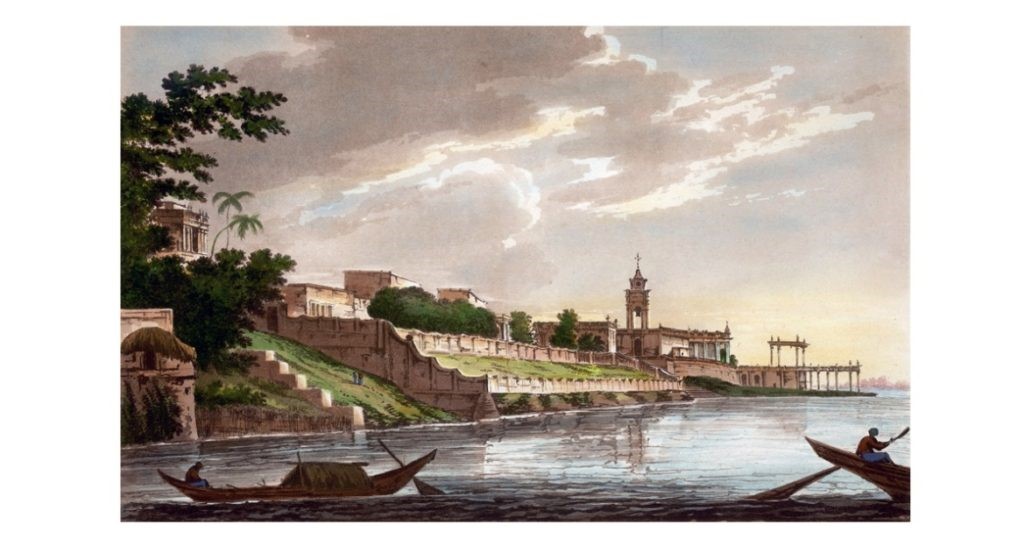– Joaquim Magalhães de Castro
In fact, abysmal was the disparity of forces between the parties involved in the dispute. On the river, the enemy had 550 boats of various sizes, and on land – assured Father João Cabral – a troop of one hundred thousand troops, many of them housed in the trenches dug in the banks for twenty-five miles along.
All the cannons were pointed towards the river, at the time with low water level due to the weak monsoon, and the contrary wind was whipping the cloth of the boats in retreat. The outlook couldn’t be more exasperating!
In order to annihilate them once and for all, the Mughals had prepared a formidable weapon of war: a raft-bomb consisting of six vessels full of firewood, tar and gunpowder, tied together. However, a group of Portuguese could manage to approach the ingenious device and eliminate its occupants before they could set it on fire. Not only did they deactivate it, they threw it at the pontoon, destroying it, and thus opening the desired passage.
This operation lasted throughout the day, as the Mughals seemed more focused on plundering the defenseless city than on the attack itself. Despite this, Manuel de Azevedo was unable to get his flotilla through the pontoon taking advantage of the night and, in the morning, the battle would triple in intensity.
“The fury of the attack,” wrote Cabral, “was beyond imagination.” The sun was filled with the smoke of gunpowder and the bullets and arrows fell like rain on Hugli’s resistance. Then, there were acts of great heroism. One of the boats, manned by three Portuguese and an African slave, was the target of a close attack by several enemy boats.
“One of the Portuguese had both legs cut off by a cannon pellet. His companions put him at the bow where he kept attacking all enemies with two gurnards that an indigenous woman was carrying,” recalls João Cabral.
And so he died, “saving the life and honor of the various white women who were on board.” Cabral also tells us about the capture of Lucrécia Tavares, known for her extreme beauty, and who most likely ended his days in a harem. Lucrécia was the mistress of Sebastião Tibao, son of António Gonçalves Tibao, lord of the island of Sandwip in 1615, and probably Tibao’s cousin who accompanied Friar Sebastião Manrique to Arracão.
Another Portuguese woman narrowly escaped prison. We speak of the wife of a man called Pedro do Couto who carried the treasure of the House of Jesuits, which consisted, “not counting gold and silver in bars, a total of one hundred and ninety thousand coins.” Assaulted and set ablaze the ship where she was, somehow she managed to jump into the water with the child in her arms, holding on to one of the cables so as not to be dragged by the current. So desperate was she that, realizing her impending capture, she asked one of the servants to shoot her in the head. Fortunately, one of the runaway boats arrived in time to pick her up.


 Follow
Follow


